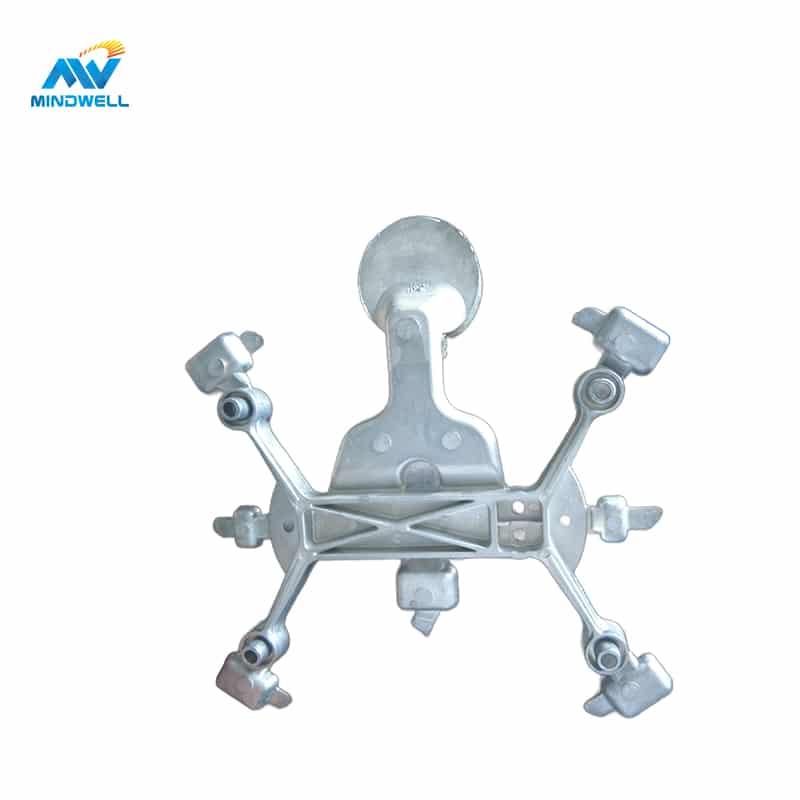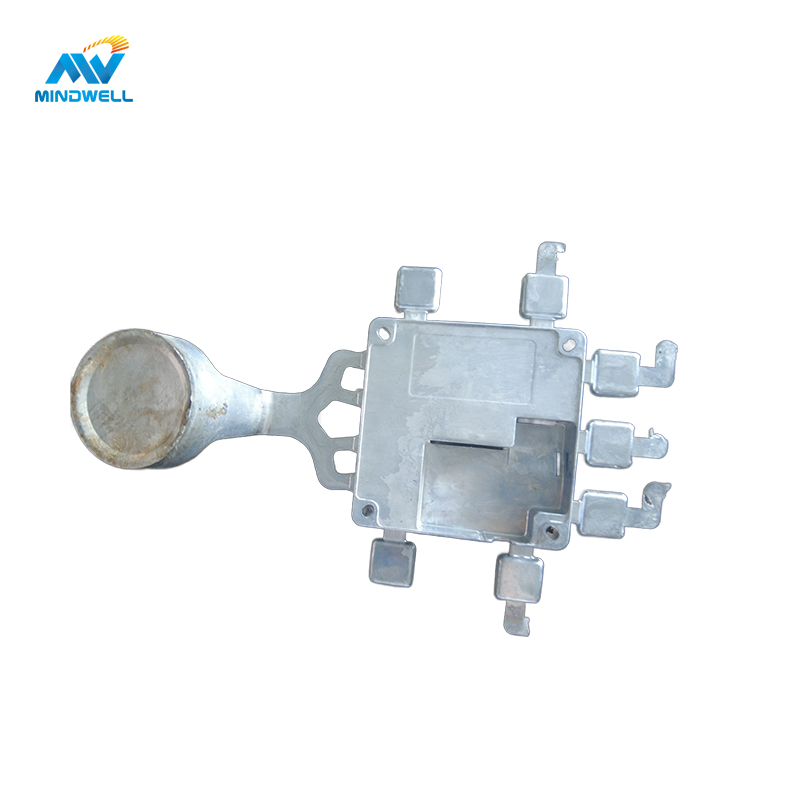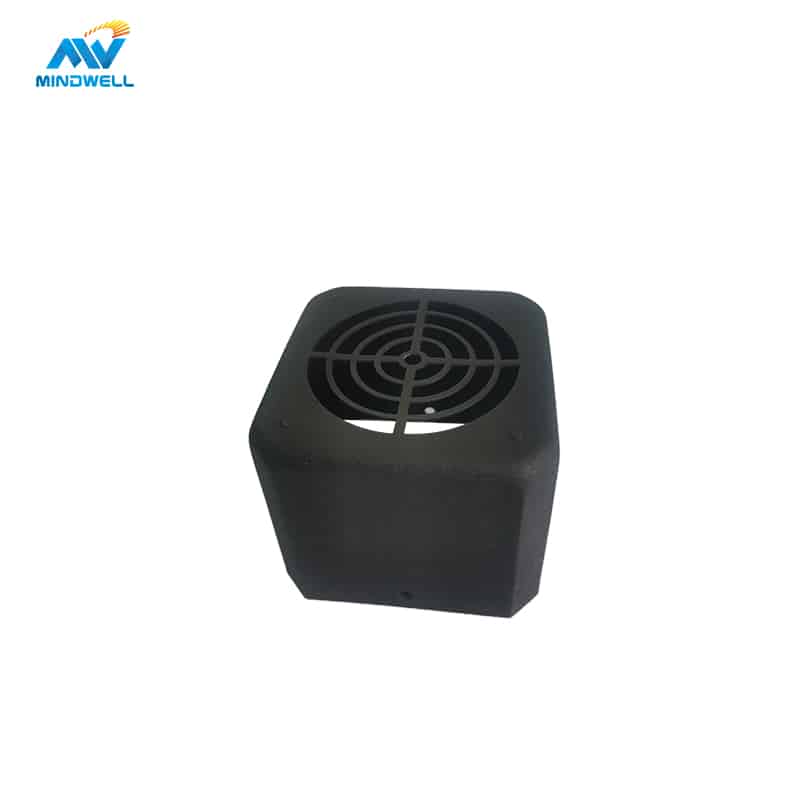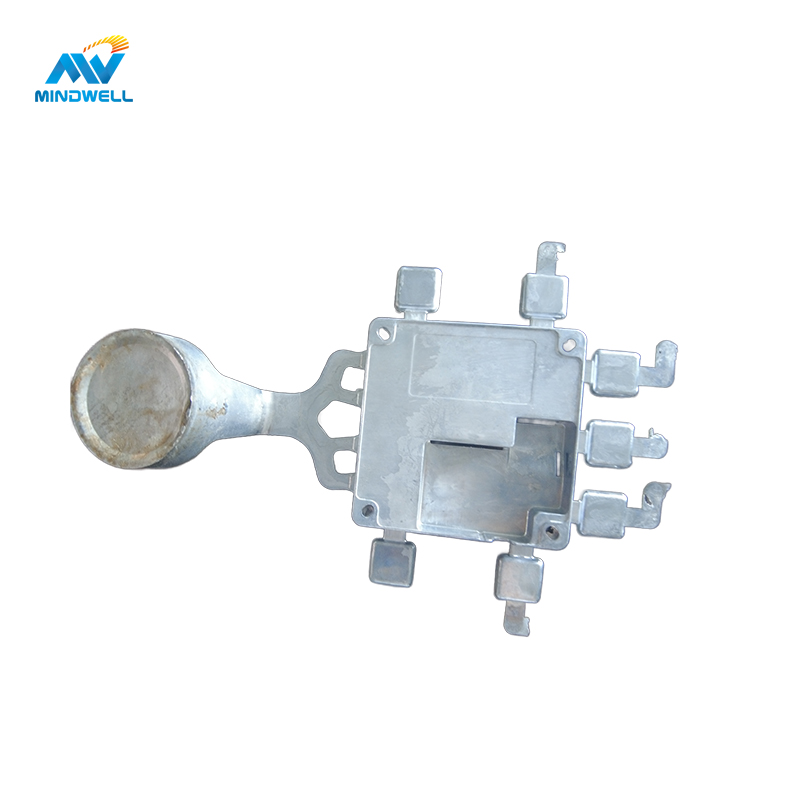High-pressure aluminum die-casting has become a transformative process in the global manufacturing world, where casting processes are applied. This article takes an in-depth look at the complexities of producing precision parts at high pressure, exploring its applications, benefits, and innovative advances the industry has witnessed.
The main factors affecting the dimensional accuracy of die castings

The main factors that affect the dimensional accuracy of die-casting parts are nothing more than the following: the impact of raw materials on product accuracy; the impact of die-casting production equipment and molds on product accuracy; the impact of human factors in the production process; and the impact of post-processing equipment and operations on product accuracy. influence, etc. Let’s explain them one by one:
- Material factors: The properties, composition, gas content, etc. of the casting material will affect the accuracy of high-pressure casting. Reasonable selection of appropriate casting materials and control of their gas content and composition can improve the surface finish and accuracy of castings.
- Mold factors: The accuracy of mold design and processing quality are key. If the mold is damaged or used improperly during production, the surface finish and accuracy of the casting will decrease.
- Process factors: The stability and operating skills of the high-pressure casting process directly affect the accuracy of the casting. For parts with high requirements, strict process control is required. .
Methods to improve the accuracy of high-pressure casting
- Reasonable design: Optimize the structural design of molds and castings to improve the processing accuracy of the product.
- Mold manufacturing: Use advanced mold manufacturing technology and fine mold processing to ensure mold processing accuracy.
- Process optimization: Adjust and optimize various aspects such as feeding, unloading, die-casting, and cleaning according to specific production conditions.
- Detection and control: Use advanced detection technology to monitor and control parameters such as temperature, pressure, speed and so on during the high-pressure casting process in real time to ensure product accuracy.
In short, improving the precision of high-pressure casting requires starting with many aspects. It is not only necessary to select appropriate materials but also to carry out reasonable design and fine processing. At the same time, it strengthens process optimization and detection control. Injecting molten aluminum under extreme pressure can ensure the manufacturing of complex and perfect parts. Only through the comprehensive application of these measures can high-pressure casting be made more precise and efficient.
Driving force: high pressure
In the die casting process, applying high pressure is an essential step, which can increase the density of the casting, reduce pores and defects, and improve casting efficiency. During the die-casting process, high pressure is applied for the following reasons:
- Increase the density of castings: During the die-casting process, applying high pressure allows the molten metal to fill the mold cavity more tightly, thereby producing a denser and more uniform casting.
- Reduce pores and defects: High pressure can help push bubbles and other defects out of the metal, which can reduce pores and other defects in castings and improve the quality and durability of the product.
- Improve casting efficiency: By applying high pressure, the speed of metal flow can be accelerated, the casting time can be shortened, and production efficiency can be improved.
In short, applying pressure is an essential step in the die-casting process. It can increase the density of castings, reduce pores and defects, and also improve casting efficiency. Therefore, die-casting technology is increasingly widely used in industrial production.
High-pressure aluminum die casting industry applications

Change car parts
The automotive industry relies on high-pressure aluminum die castings for critical components. From engine parts to transmission housings, the automotive industry benefits greatly from this advanced technology.
Electronic equipment
High-pressure die casting plays a vital role in the manufacturing of components for electronic devices, providing them with superior lightweight design, thermal conductivity, EMI shielding, durability and customization. As technology advances, aluminum alloy high-pressure die-casting will continue to drive innovation in the electronics industry, providing higher-quality and more reliable housing solutions for future electronic devices. Its ability to produce complex shapes with tight tolerances makes it indispensable in the electronics industry.
Versatility in consumer products
Benefiting from high-pressure die casting of household appliances to power tools, manufacturers leverage its versatility to enhance product performance.
Commonly used aluminum materials for high-pressure die casting
The various aluminum alloys used in high-pressure die casting have a great impact on the strength, durability and performance of the final product. The following are the commonly used types of aluminum alloys:
- Aluminum silicon alloy
Aluminum-silicon alloy is a commonly used cast aluminum alloy whose main components are aluminum and silicon. It has low density, high strength, excellent heat resistance and corrosion resistance, and good casting performance. It is widely used in aerospace, automobiles, electronics, ships and other fields. - Aluminum-magnesium alloy
Aluminum-magnesium alloy is also a common cast aluminum alloy, mainly composed of aluminum and magnesium. It has the advantages of high specific strength, high elastic modulus, low thermal expansion coefficient, and good fatigue resistance. It is widely used in automobiles, ships, motorcycle parts, aerospace and other industries. - Aluminum-manganese alloy
Aluminum-manganese alloy is a type of aluminum alloy whose main components are aluminum and manganese. It has the characteristics of high strength, low density and excellent processing performance, and is widely used in many fields such as automobiles, aerospace, power and electrical, etc. - Aluminum-copper alloy
Aluminum-copper alloy is an alloy composed of aluminum and copper. It has the advantages of high strength, high hardness and strong corrosion resistance. It is a commonly used structural material and is widely used in aerospace, automobiles, ships, electrical appliances and other fields.
To sum up, aluminum-silicon alloy, aluminum-magnesium alloy, aluminum-manganese alloy and aluminum-copper alloy are commonly used cast aluminum alloys, each with its own characteristics and widely used in different fields.
Classified by industry model
- Commonly used die-cast aluminum ingots: ADC12, A380, ZLD102, ZLD104 and non-standard aluminum alloy ingots.
- Commonly used cast aluminum ingots: ZLD102, ZLD104, ZLD107, A356, etc.
- Commonly used forged aluminum ingots: W023, etc.
- Aluminum commonly used to make aluminum plates and strips: A00 purity (99.7%), plus magnesium, manganese, silicon and other elements to make various aluminum plates and strips. Aluminum strips may use 99.9% pure aluminum.
- Aluminum rods commonly used as profiles: 6061, 6063.
Mold technology
The important role that die-casting molds play in the die-casting production process is:
- Determine the accuracy of the shape and size of the casting.
- The determined gate system (especially the gate position) determines the filling status of the molten metal.
- The determined overflow system affects the filling conditions of molten metal.
- The strength of the mold limits the maximum injection pressure.
- Affect the efficiency of operation;
- Control and adjust the heat balance of the die-casting process;
- The quality of the casting when it is taken out (such as deformation, etc.);
- The quality of the mold-forming surface not only affects the quality of the castings but also affects the paint spraying cycle and the ease of taking out the castings.
Innovation and Challenge
With the continuous development of global die-casting technology and continuous breakthroughs in materials and processes, high-pressure die-casting is also realizing the process from 0 to 1, thus starting a revolution in new part manufacturing. For example, the application of integrated die-casting has triggered a revolution in automobile production and manufacturing. Through integrated manufacturing, multiple parts can be molded at one time to achieve innovations in lightweight, production processes, precision, etc. Judging from the current market, the integrated die-cast rear floor is a more preferred solution structure, which can better take into account the needs of cost, performance, manufacturing, etc.
Challenges faced by high-pressure aluminum die casting
Aluminum die casting also faces some challenges during its application:
- High equipment investment cost: The investment cost of aluminum die-casting equipment is relatively high, which may be a considerable burden for small and medium-sized enterprises.
- Quality control is difficult: Since the aluminum die-casting manufacturing process involves multiple links, including the selection of aluminum alloy materials, mold design, manufacturing processes, etc., controlling product quality is relatively complex and requires strict management.
- Thermal cracking problem: aluminum alloy has a certain sensitivity to thermal cracking. The manufacturing temperature and cooling rate need to be controlled during the manufacturing process to prevent the occurrence of hot cracking.
- High environmental protection requirements: The waste gas and waste water generated during the aluminum die-casting process need to be effectively treated to comply with environmental protection requirements.
Mindwell Company’s experience sharing:
Mindwell has accumulated rich experience in aluminum die-casting and has achieved some results. Here are some experiences to share:
- Optimize the manufacturing process: Mindwell improves production efficiency and product quality by continuously optimizing the manufacturing process of aluminum die-casting.
- Strengthen quality control: Mindwell focuses on quality management and has established a strict quality control system to ensure the consistency of aluminum die-casting products.
- Strengthen talent training: Mindwell focuses on cultivating technical talents and improving employees’ professional knowledge and skills in aluminum die casting.
- Joint R&D cooperation: Mindwell cooperates with universities and scientific research institutions to carry out research and development of aluminum die-casting technology to promote technological innovation and industrial upgrading.
As an advanced metal processing technology, aluminum die-casting has shown broad prospects in various regions around the world. Although facing some challenges, Mindwell has made certain achievements in the field of aluminum die-casting by continuously optimizing manufacturing processes, strengthening quality control and providing talent training. It is believed that in the future, aluminum die-casting will continue to grow and make greater contributions to the development of global manufacturing.
environmental considerations
The materials and processes used in aluminum alloy high-pressure die-casting are not completely environmentally friendly. How aluminum alloy high-pressure die castings can achieve environmental protection while ensuring product quality is a question we need to explore.
Measure 1: Choose environmentally friendly materials
Aluminum alloy die-casting materials usually include aluminum alloy materials, additives, lubricants, etc. Among them, if the additives are not environmentally friendly, they may cause emissions and pollution, and the lubricants may also cause pollution to the surrounding environment. In order to achieve environmental protection in aluminum alloy die-casting, environmentally friendly materials must be selected, such as water-soluble lubricants, which can effectively reduce emissions and protect the environment.
Measure 2: Use recycled lubricants
Aluminum alloy die-casting lubricants often form waste liquid during use, and the waste liquid treatment process may produce more environmental pollution. Therefore, the use of recycled lubricants is crucial for environmental protection. The streamlined aluminum alloy die-casting machine can effectively recycle lubricating oil and reduce the generation of waste liquid. Proper storage and disposal of liquid waste is essential to prevent environmental pollution.
Measure 3: Improve recycling efficiency
The recycling of aluminum alloy die-casting lubricants requires the waste liquid to be treated to remove impurities and contaminants before it can be reused. Therefore, improving recycling efficiency can effectively improve the environmental benefits of aluminum alloy die castings. In order to achieve more efficient recovery efficiency, we can take measures such as increasing the filtration rate of lubricating oil and extending its service life.
Measure 4: Strengthen equipment maintenance
Equipment maintenance and upkeep is also critical to ensuring the environmental benefits of aluminum die casting. Proper equipment cleaning and maintenance can effectively reduce lubricant consumption and its emissions into the environment. At the same time, the status of mechanical equipment is regularly checked, and severely worn equipment parts are updated and repaired in a timely manner to ensure the normal operation of aluminum alloy die-casting equipment and effectively reduce waste emissions.
The key to the environmental benefits and pollution reduction of aluminum alloy die castings lies in taking comprehensive, feasible and practical measures. Choosing environmentally friendly materials and production processes, strengthening waste management, equipment maintenance and health maintenance are all effective measures for environmental protection in aluminum alloy die-casting and are also important manifestations of corporate social responsibility and image. Therefore, we should fundamentally strengthen the environmental awareness and responsibility of the aluminum alloy die-casting industry, maintain the ecological environment, and promote sustainable development.
FAQ
Is high-pressure die casting suitable for small-scale production?
Yes, high-pressure die casting is suitable for both large-scale and small-scale production, providing cost-effective solutions for various industries.
How do innovative alloys impact the final product?
Innovative alloys enhance the mechanical properties of high-pressure die-cast parts, helping to increase strength and durability.
What are the main challenges in high pressure aluminum die casting?
Challenges include resolving porosity issues and achieving complex designs, and industry advancements are actively mitigating these challenges.
Can high pressure die casting be applied to non-aluminum materials?
Although aluminum is the primary material, the principles of high-pressure die casting can be applied to some other alloys, but the processes are different.
How does high-pressure die casting contribute to sustainable manufacturing?
High-pressure die casting contributes to sustainability and reduces environmental impact through its energy-saving process and the recyclability of aluminum.
podsumowując
In summary, high-pressure aluminum die casting is the pinnacle of precision manufacturing, transforming the industry and pushing the boundaries of what is achievable. Its applications, innovations and future prospects make it a cornerstone of modern manufacturing.






